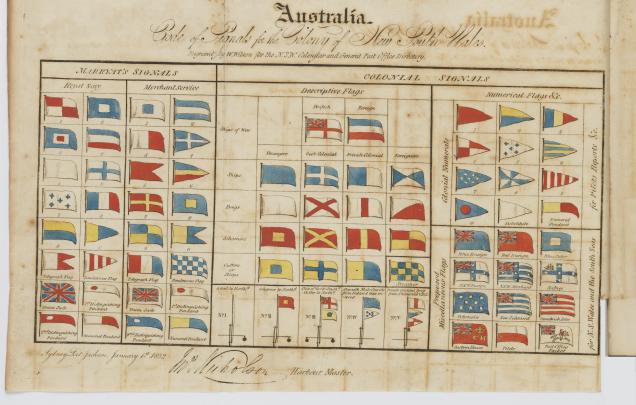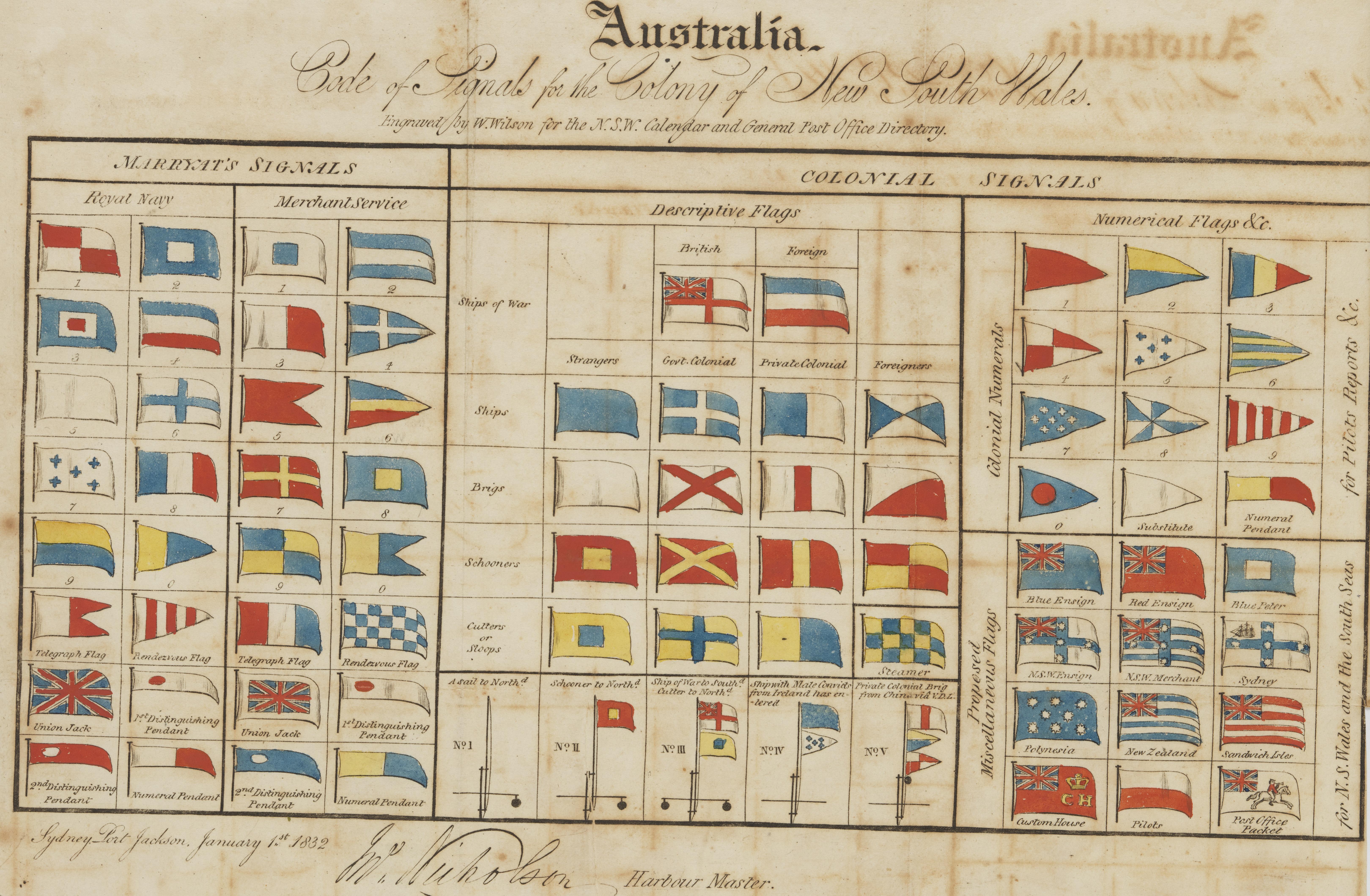Ahoy!
Students discover the different forms of ship-to-ship communication employed by the First Fleet.
This is the student activity 1 of 7 of the Journey of the First Fleet learning activity.

Ahoy!
The communication between the 11 First Fleet ships was an important aspect of the journey. In a time before radios, satellites or mobile phones, delivering messages between people on different ships was very challenging. There appears to have been at least four different ways messages were sent from ship to ship on the First Fleet convoy.
Number 1
The ships would fire off guns and the number of shots would be understood by the other ships.
Read Lieutenant Ralph Clark’s entry in his journal on 8th January 1788 when the ships were sailing up the coast of lutruwita (Tasmania): (Tip: read the word use as us.)
It is foggy wether and that if the wether continued So that when he made the Signal to Tack if he could not See use or the other Ship he would fire 2 Guns which was to be Answerd by one from use.
Number 2
Little boats moved between the ships in good weather and calm seas to take messages, and move people (including convicts) and supplies like food. Regular inspections were carried out by the officers and surgeons from other ships too.
Read Lieutenant Ralph Clark’s record on 18 July 1787:
Saw the Alexander Send her Boat on board the Charlott and Return on board with Mr. White the Surgeon.
Number 3
Chalk messages were written on a blackboard at the stern of the ship. The ships must have been quite close together for anyone to read the message. Perhaps they even shouted across the ocean on calm seas.
Read how this happened on 4 January 1788 onboard HMS Sirius as recorded by Captain John Hunter when the longitude,
was markd with Chalk upon a black painted board and Shewn over the Stern to the Convoy.
Number 4
There was a system of communication using flags flown on different masts. We imagine that everyone onboard would have studied what each flag or combination of flags meant.
Read a description by Lieutenant Ralph Clark on 28 July 1787:
made the Signal (a blue Flag at the main Top G: M Head) for the Ships to close and keep near the commanding officer… the commondore made the Lady Penryns Signal (a whit Flag at the Mizen Peek) to come in to his boat.
And on the 5 August 1787:
… made the Signal (a chequered flag at the Mizen Peek) for the fleet to prepair to Anchor.
And on the 18 September1787:
…made the Signal (a red flag at the Mizen Peak) for the Strenmost Ship to make more Sail.
And one that affected the convicts directly on 4 July 1787:
When the Sirius hoist a Blue flag with a Yellow Cross at the Main Top Gallant Mast head the officers Seamen Marines and Convicts are the to goe on allowance of water.
There is mention of other flags in Lieutenant Ralph Clark’s journal, a red and white flag and a blue flag with a white cross.
Captain Arthur Phillip employed a combination of flags, lights and gunshots so the captains of each ship in the Fleet could communicate with each other. As the lead ship, HMS Supply would sail ahead of all the fleet investigating the way forward with a light displayed so the other ships could follow her direction. Like a code, the masters of each ship had all the pre-arranged instructions written down so they would understand what the communication meant.
Answer these questions:
- What was the best communication system in foggy conditions?
- What was the worst communication system in wet conditions?
- How were the flags used to convey different messages?
- How was the light on HMS Supply generated?
- If the masters of each ship had no instructions for understanding the communication what might have happened?
Nautical Flags
Teachers note: Print Resource 2: Flag template
Look at the guide to nautical flags in use in Sydney in the 1830s.
Communicate within your classroom using only these nautical flags. Without speaking point to each flag to spell out your message or print and cut out the flags for you to use on your desk.
Answer these questions:
- What challenges did you have in communicating with each other?
- What further challenges would the First Fleet have encountered with flag communication on the ocean?
Research the history of nautical flags as communication.
Design a new set of nautical flags, using the flag template (Resource 2), that CONVICTS could have used on the First Fleet, had they had access to flags onboard ship. What messages would they have been sending to each other? What mischief might they have been up to? Consider different flag colours, patterns, shapes, graphics and flag combinations to mean different things. Perhaps a flag flown upside down might have a very different meaning to one right-way up. If there are two or more classes at your school studying the First Fleet, and you can see each other’s windows, communicate between classrooms using your flags to send messages or perhaps communicate with each other across the playground. Make sure all of your flags have the same meaning!
